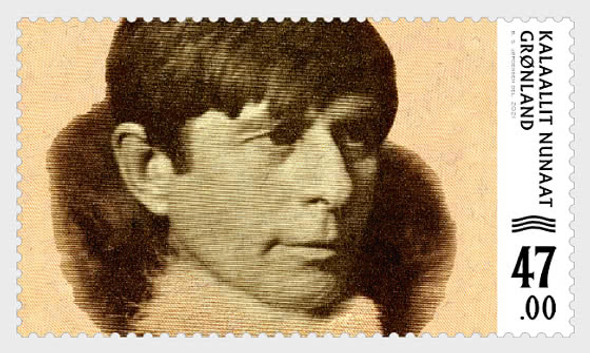Description
The Liberation
The war had strengthened the Greenlandic sense of loyalty towards Denmark. There is nothing to suggest that Greenlanders were particu- larly motivated towards independence from Denmark, neither during the war nor the years immediately afterwards. What was apparent from Greenland, however, was a desire for increased involvement in the decision-making process and greater equality with the Danes.
The most important wartime duties for national administrators Eske Brun and Aksel Svane had been to maintain Greenland, both with re- gard to the USA and, in part, with regard to Greenlandic con dence in Denmark’s ability to prevent Greenland from suffering shortages.
Building supply lines to and from the USA and, later on to and from Canada, required one of the national administrators to be located in the USA. Initially, Eske Brun was posted as leader of the Greenland delegation. He would, how- ever, see himself largely outmanoeuvred by Henrik von Kauffmann, the Danish representa- tive in Washington. Compared to Brun, Kauff- mann was a bigger cog in a large machine.
Kauffmann was recognised as the independent Danish representative in autumn 1941, which meant that he outranked the national adminis- trators from Greenland. Aksel Svane travelled to Washington later on where, against every expectation, he would spend the rest of the war as Kaufmann’s subordinate. This meant that Eske Brun was the only remaining nation- al administrator in Greenland for the remain- der of the war. Here, he would be the big cog in a small machine. According to Eske Brun, the guiding principles would be continued dur- ing the war, but: “I still felt that I had plenty of freedom with regard to how I dealt with more detailed issues when the extraordinary situation required unorthodox solu- tions, but stubbornly pur- sued the same objective, which was to return home and be able to truthfully say that nothing happened to interrupt Danish work projects in Greenland that would prevent their re- sumption from where they were left in 1940.”
One example of Brun’s decision to make auton- omous decisions was the 15% pay rise that was awarded to salaried employees in Greenland in 1942. This pay rise was justi ed because of the increased wartime living costs.
The founding of the weekly periodical ‘Grøn- landsposten’, broadcasting services, the cen- tralised administration and the national coun- cils, changes to the supply system and, nally, the North East Greenland Sled Patrol can all be considered signi cant changes to former practices. These could all be categorised as “necessitated by the extraordinary situation”.
The result was that Greenland had throughout the Second World War worked against the Axis Powers and, thus, contributed to Denmark’s lib- eration. In addition, since Greenland was made available to the USA, this was considered a Danish contribution to the Allied war effort too.
When he arrived back in Denmark, Brun told the Politiken daily newspaper that Greenland had not suffered shortages during the war, but that it had been upsetting to hear all the terrible news from Denmark. Greenland was, therefore, very happy that Denmark was free once again. A few days later it was also con rmed in the Social-Demokraten daily paper that: for so long from Denmark, had a greater sense of attachment to Denmark than ever before.”
Links are re-established
There was plenty of joy and optimism among the Greenlandic population that links had been restored between Denmark and Greenland. For the entire duration of the war, Greenland had seen developments that were due to the ex- traordinary conditions and had proved itself to be ready to take on every new challenge that was presented.
Brun’s two reports from 1945 recommended a thorough investigation of policy for Greenland, but no radical reforms and, for example, no recommendation that a commission should be set up. Both Greenland National Councils did not want to see radical changes either but was unambiguous when it expressed that policy changes should be the result of a commission. Brun participated in some of the meetings that were conducted during the negotiations at the beginning of 1946, but to the disappointment of some of the Greenlandic delegates he did not support radical changes to current policy. The 1946 considerations expressed a cautious course of action, the idea being that policy would be reviewed within ve years.
Greenland became an increasingly important negotiating piece for Denmark, with regard to the rest of the world. The USA was highly moti- vated towards maintaining a continued presence in Greenland, which would eventually become apparent to Denmark. Greenland was, thus, a high-value card in Denmark’s hand with regard to NATO and related security guarantees.
Source: ‘Eske Brun og det moderne Grønlands tilblivelse 1932-64’ (Eske Brun and how mod- ern Greenland came to be 1932-64), PhD dis- sertation by Jens Heinrich, June 2010.







